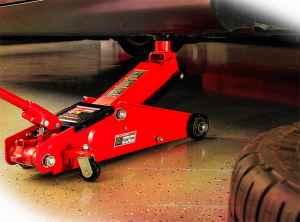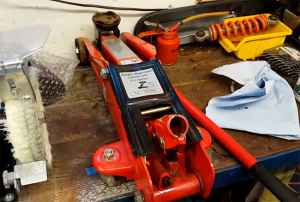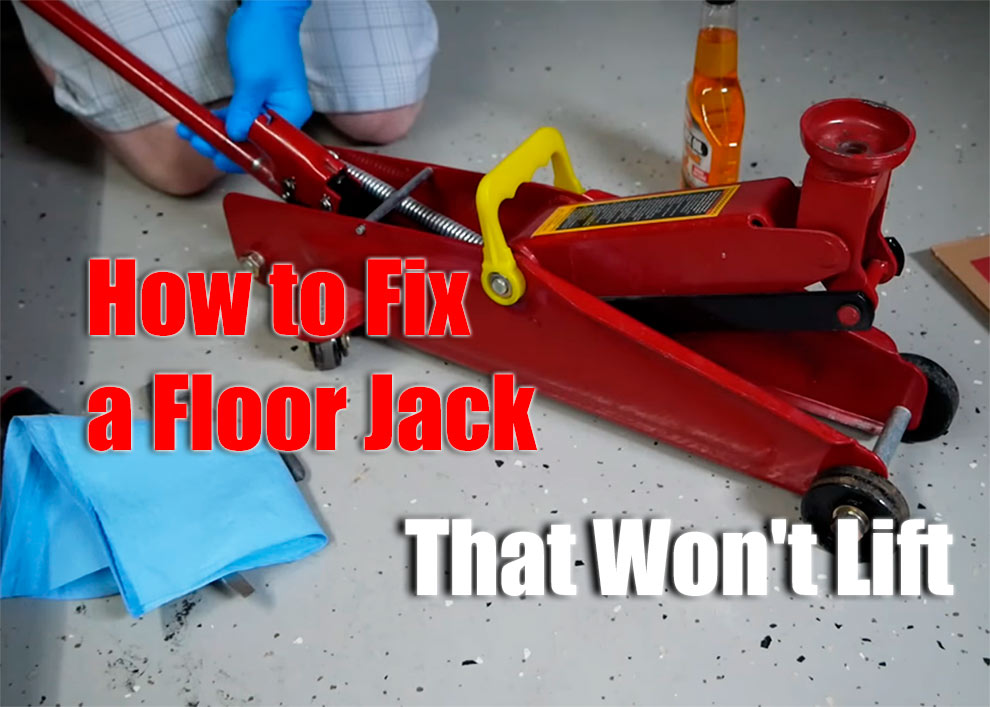The floor jack is one of the most important tools in a car owner’s arsenal. It’s also one of the least understood pieces of equipment out there. That doesn’t have to be the case, though! This guide will give you everything you need to know about using your floor jack and fixing it when something goes wrong.
What is a floor jack and what does it do
A floor jack is a tool used to lift the car or other vehicle off of something like an axle, wheel, rocker arm, engine mount, or differential. It’s typically composed of two telescoping tubes and can be adjusted from as low as 12 inches to over 18 feet in height.
The basic function of a floor jack is relatively simple: it lifts up cars so that they’re higher than whatever part needs to be replaced. The typical use for this piece of equipment would be changing tires on cars with drive-on ramps (or lifting them onto said ramps) but there are many more uses people find every day!
How changing tires with a floor jack

How to use a floor jack as an emergency lift for your car
If you find yourself with a broken axle, your car sinking into the ground, or some other minor disaster that prevents you from being able to drive anywhere… then use this section of our guide on how to use a floor jack as an emergency lift for your car.
The most common use for floor jacks as emergency lifts would be to raise the car high enough so you can drive out of a muddy area or back onto dry pavement after sliding off the side of the road. Floor jacks are also often used in order to get around something that’s on a level lower than your vehicle – like getting over railroad tracks!
Lifting up both sides equally with a floor jack: Place blocks under tires before starting operation; adjust the height until the wheels clear the obstacle, then remove the floor jack and blocks from underneath tires. This should only ever be done if there’s really no other way because this doesn’t offer any real kind of protection against accidental dropping or slipping while the car is being raised. It’s also bad for the floor jack!
How to fix a leaky, stuck, or broken floor jack that won’t lift

This should be done regularly anyway in order to prevent any accidents from happening like pinched fingers. It can also make sure your floor jacks last longer by making them more resistant to corrosion.
Remove hydraulic pump handle; use pliers to remove hose clamps securing hoses at both ends of cylinder assembly (drain valve at bottom, filler valve at top); pull hoses from cylinder assembly; remove fill and drain valves. Remove the base plate by loosening bolts around the perimeter of the floor jack body (don’t forget to clean up any spilled hydraulic fluid after you finish). Clean all parts with WD-40 and reassemble in reverse order.
The best way to store your floor jack when you’re not using it
The best way to store your floor jack is in the original box it came with, or if you don’t have that anymore then a sturdy case; and we recommend using some kind of padding (i.e., bubble wrap) on all sides for extra protection against damage from drops or impact. This will help avoid any accidental spills inside the storage area which can lead to corrosion overtime – not to mention messy!
Things you should never do with your floor jack (even if they seem like good ideas)
- Never use a floor jack as a portable car lift when your vehicle is not on the ground (i.e., to carry it up steps or ramps) because this can cause damage and make things much more difficult than they need to be.
- Don’t set anything heavy directly in front of an open, raised hydraulic cylinder; never let anyone stand under the center post of a floor jack when lowering vehicle; don’t change hoses around without also changing fluid first – if you have any questions about what we’re talking about then just contact us!
We hope that reading through our guide has helped solve some problems for you but please feel free to write back with any other concerns you may have had before now!

Add Comment